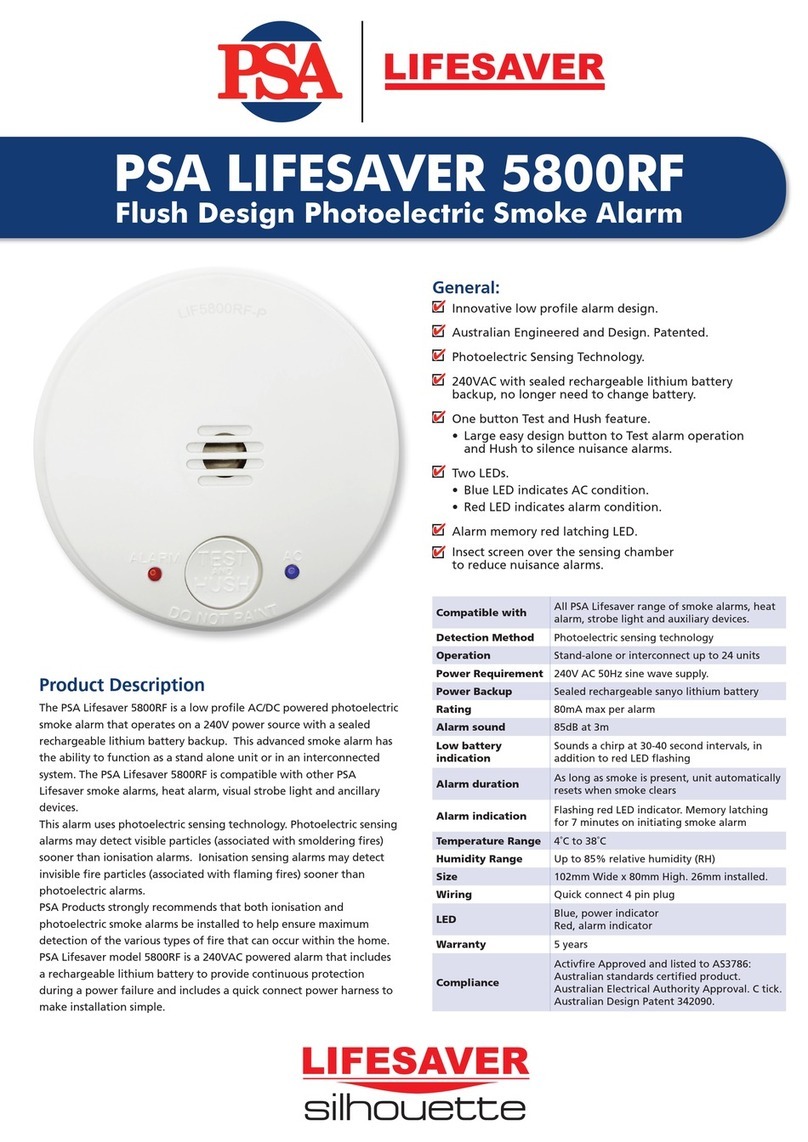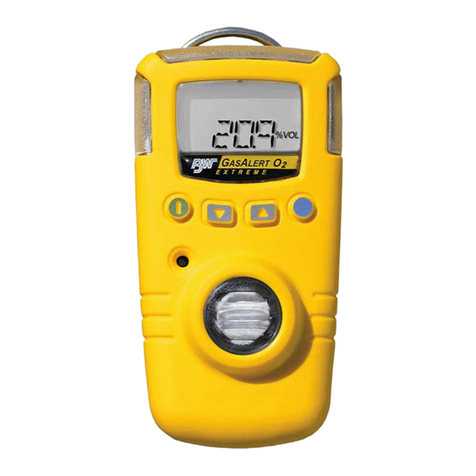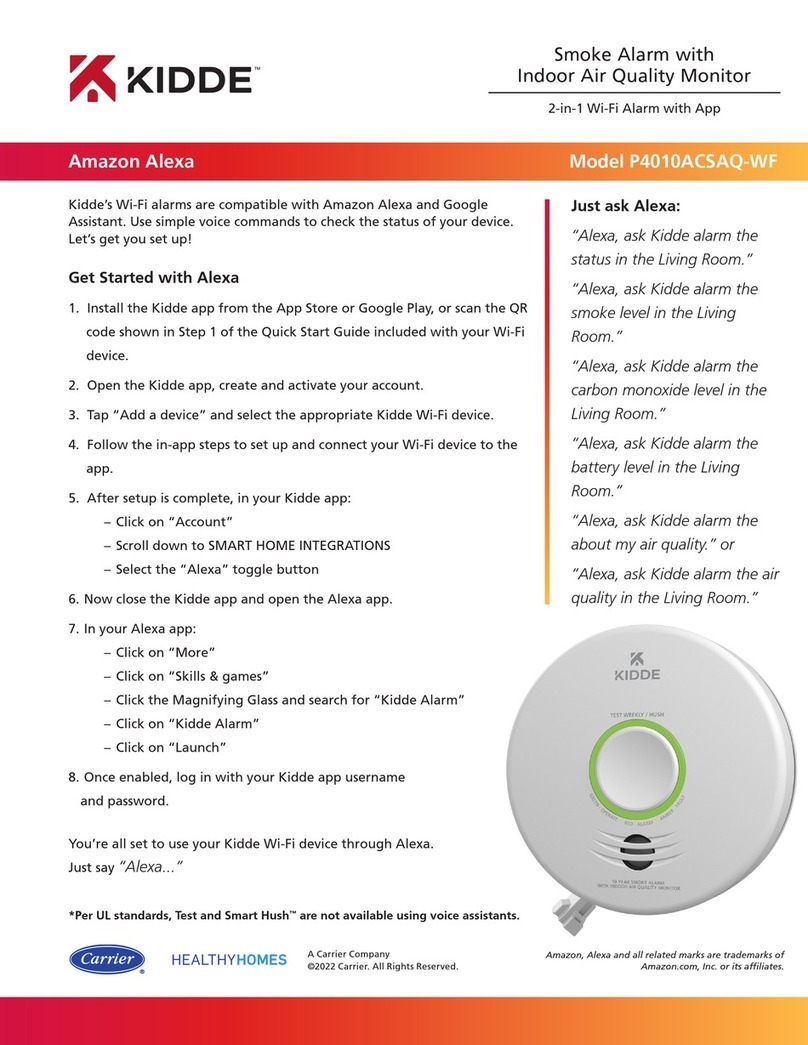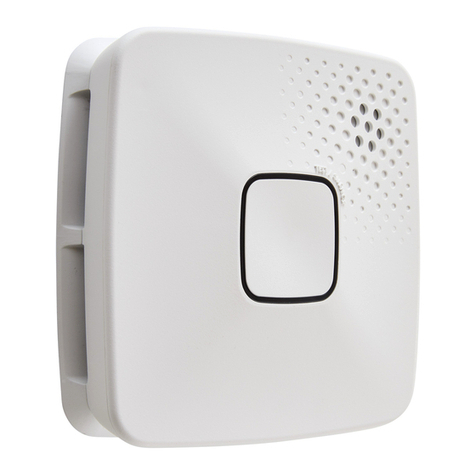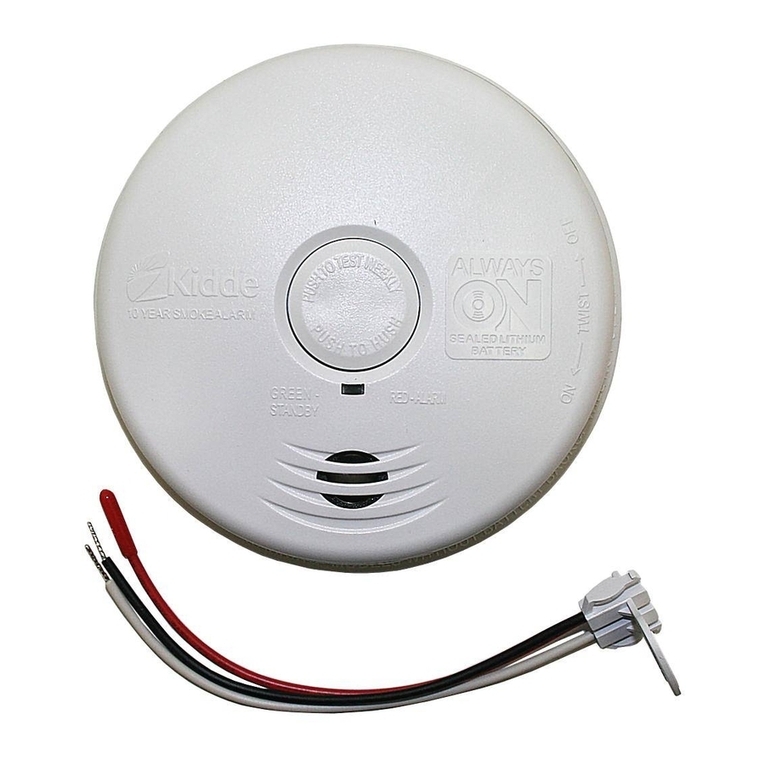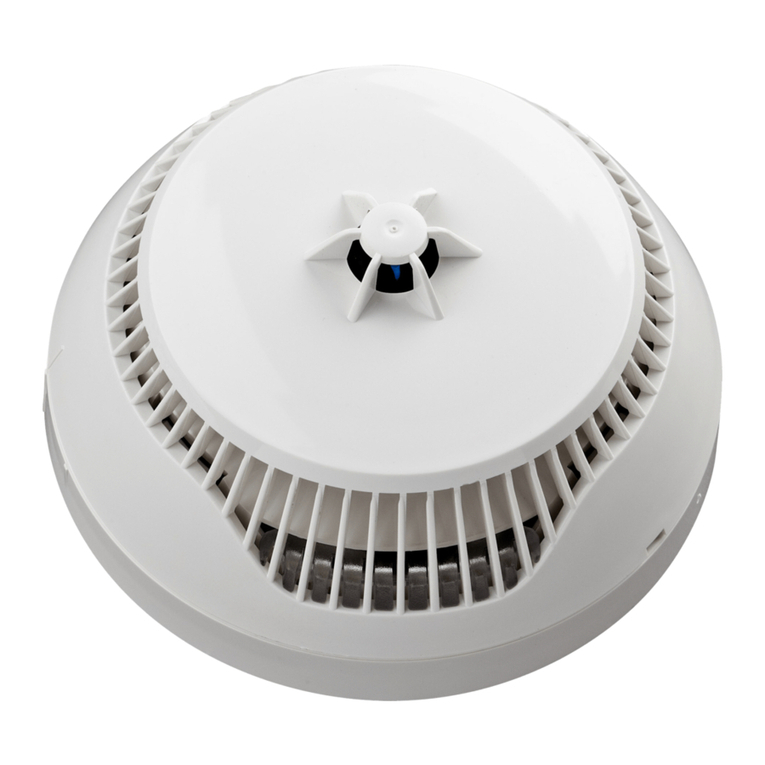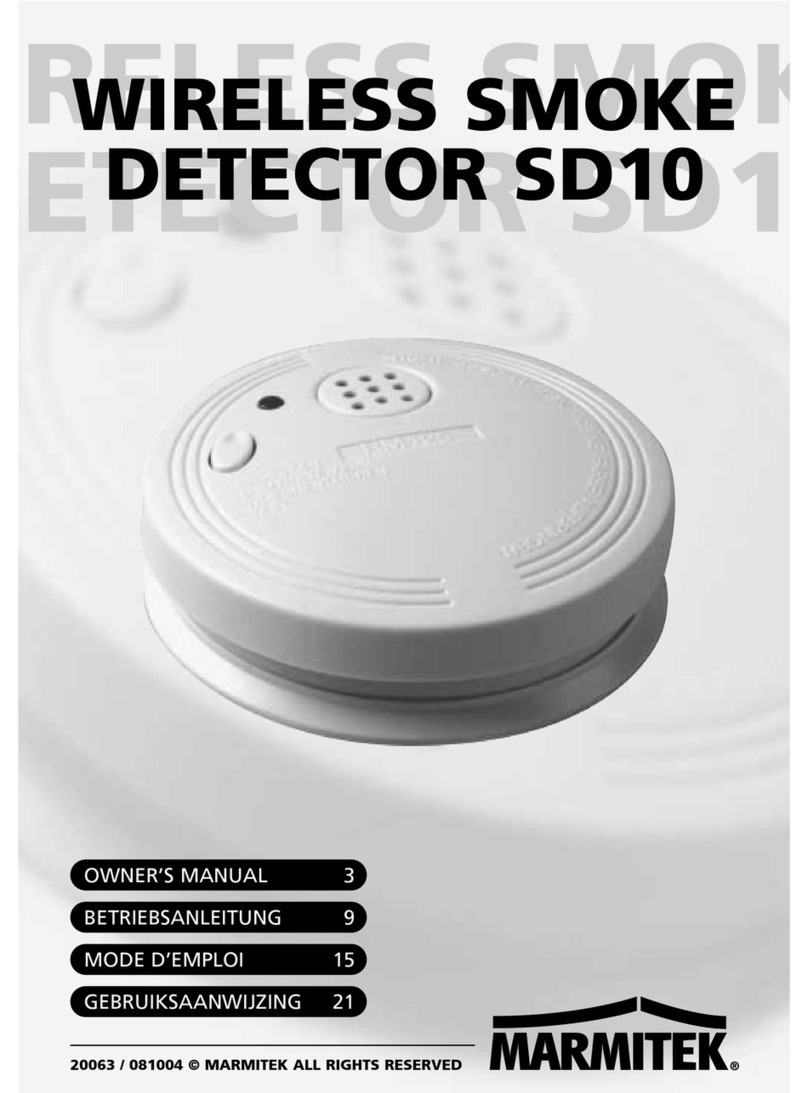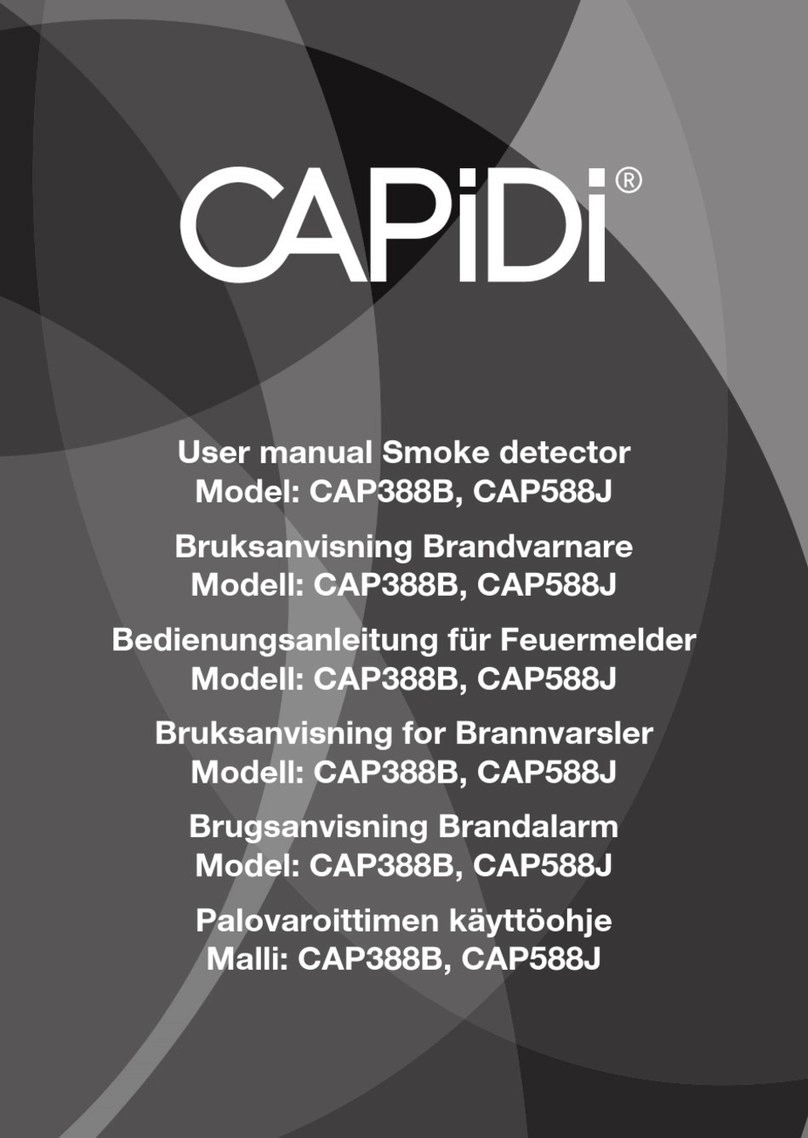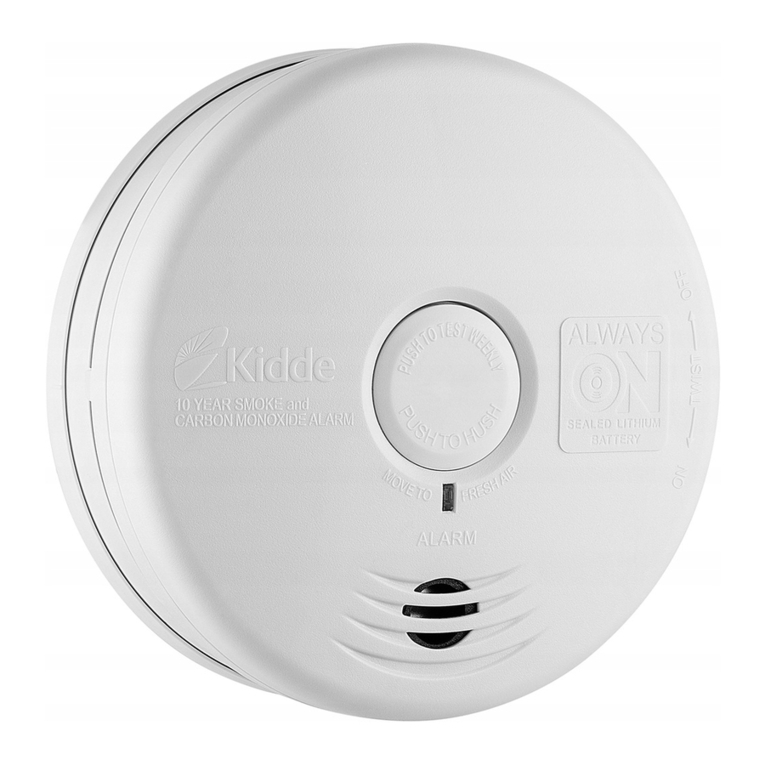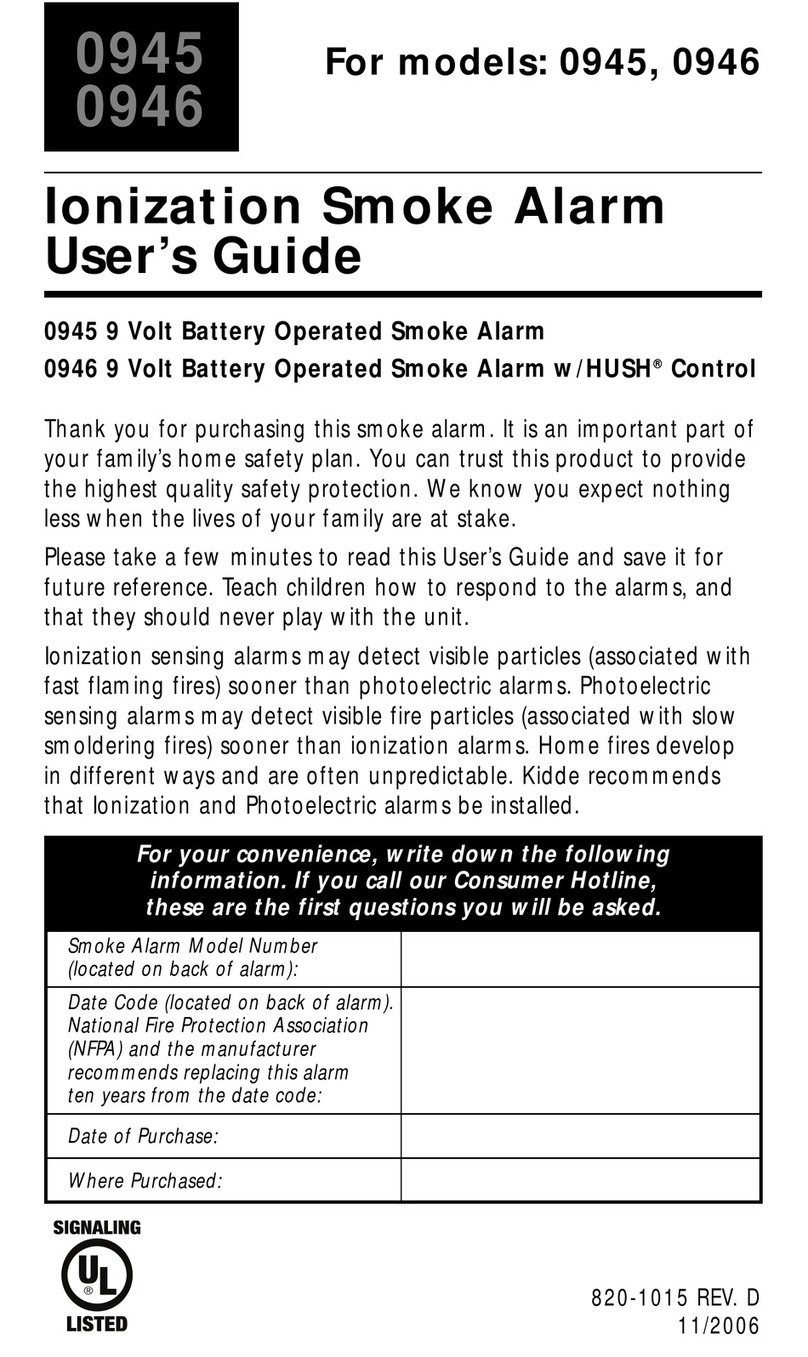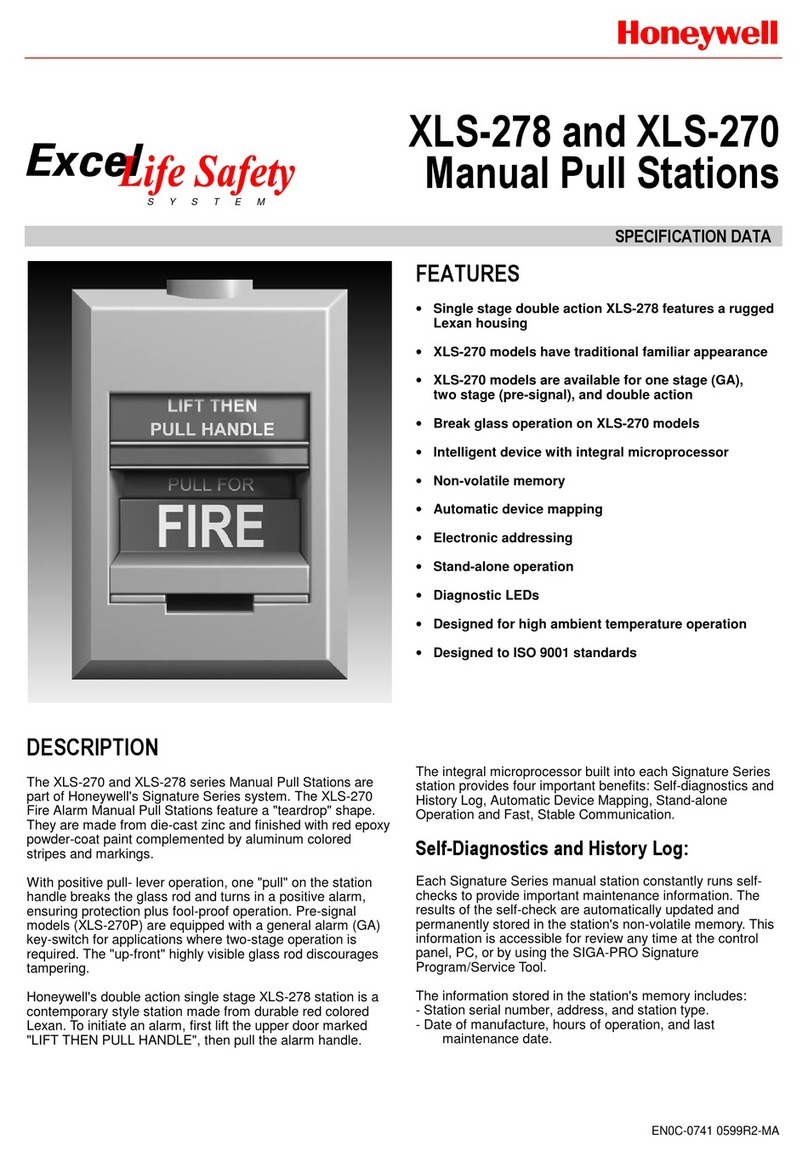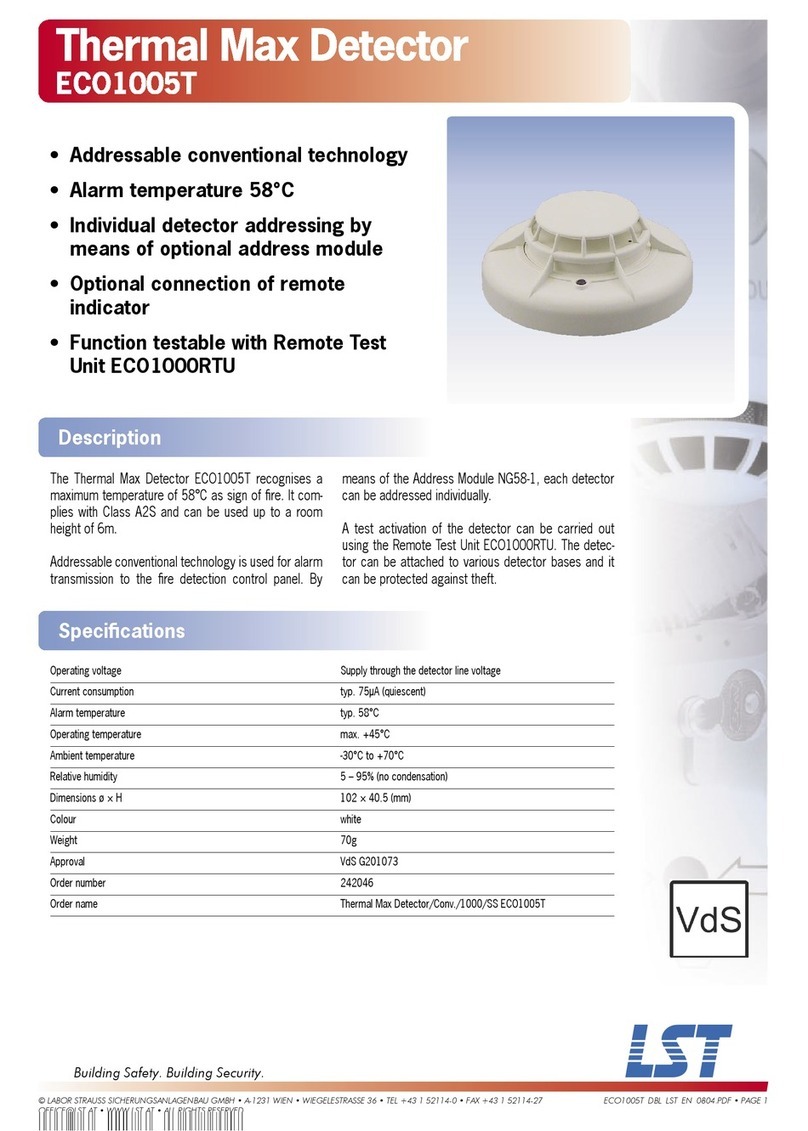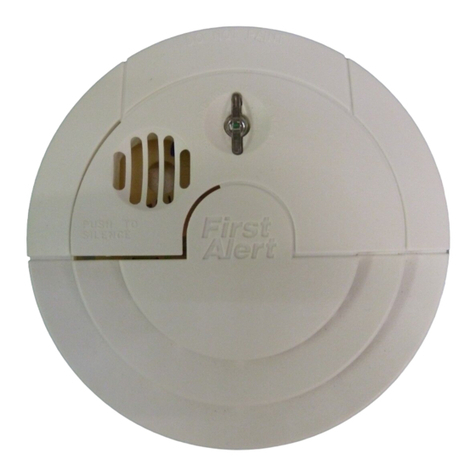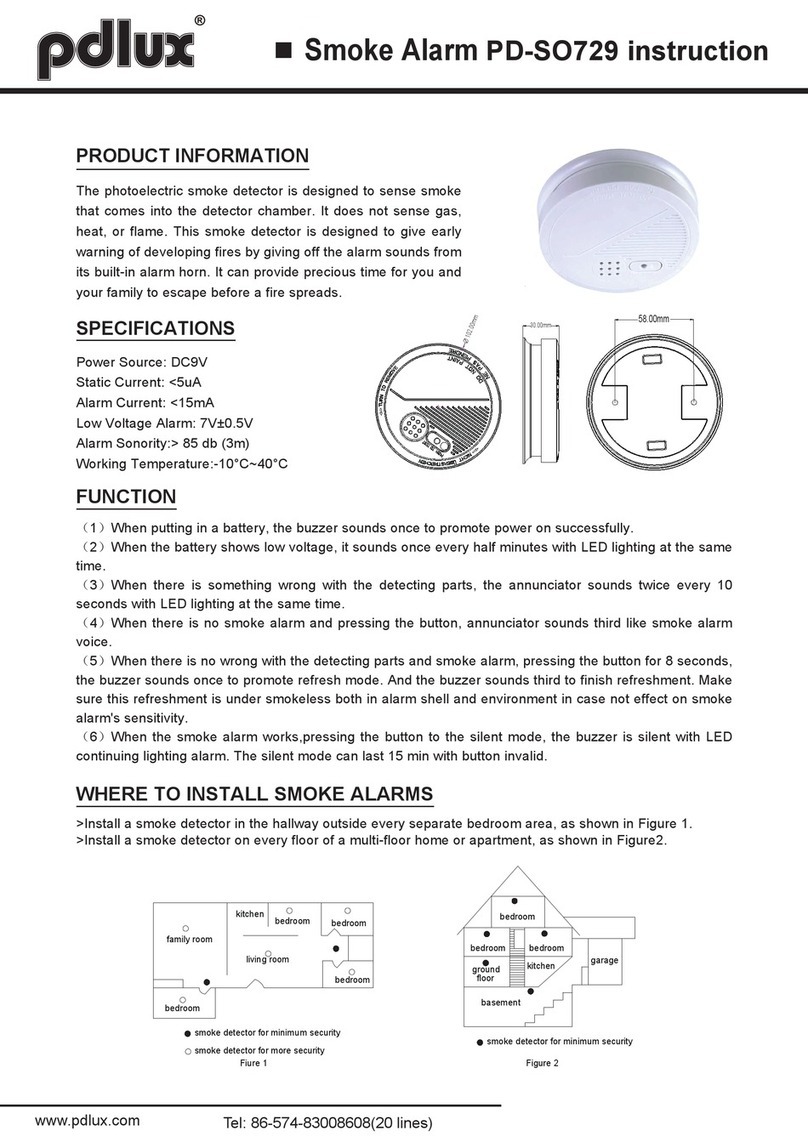PSA LIFESAVER LIF5800ACF User manual

11
• 240VAC mains powered single station
and / or interconnectable (24 units)
photo-electric smoke alarm.
• Built-in lithium battery backup.
• Test /Hush Control and Low battery
indication.
Flush Mounted Smoke Alarm
User Guide
1399-7202-01
ALARM
LIF5800ACF
AC/DC
TEST
HUSH
AND
D
O
N
O
T
P
A
I
N
T
Tested & Complies to
Australian Standards
AS3786:2014
Model LIF5800ACF

2
Thank You for Purchasing This LIF5800ACF Smoke Alarm
This smoke alarm has an expected service life of ten years under normal conditions.
We recommend that you should replace after 10 years from installation date
to ensure normal operation.
The LIF5800ACF smoke alarm is powered from a 240V AC supply, and has a DC battery back-up.
The LIF5800ACF smoke alarm can be interconnected with up to 24 other PSA Lifesaver models.
Teach children how to respond to the alarm and that they should never play with the unit.
Your PSA LIFESAVER Smoke Alarm was designed for use in a residential environment.
It is not designed for use in a recreational vehicle (RV) or boat.
Note: Please thoroughly read this user guide and save the document for future reference and
to pass on to any subsequent owner.
IMPORTANT: Additional markings can be found on the back of the unit.
Date Code (on back): ___________________
Date of Purchase: ___________________
Where Purchased: ___________________
Date to Replace: ___________________
Product Support: 1300 772 776
Please write down the below information
and have this at hand when you call.

23
Contents
1. Smoke Alarm: What To Do When The Alarm Sounds .....................................................................1
2. Other Visual And Audible Indications ............................................................................................. 2
3. Introduction, Product Features And Specifications .......................................................................... 3
4. Recommended Locations For Alarms ............................................................................................ 4
5. Locations To Avoid ........................................................................................................................ 6
6. Installation ......................................................................................................................................7
7. Mounting Instructions..................................................................................................................... 9
8. Operation and Testing ................................................................................................................. 11
9. Nuisance Alarm And HUSH ...........................................................................................................13
10. Cleaning Your Alarm.....................................................................................................................14
11. Good Safety Habits .......................................................................................................................15
12. Limitations Of Smoke Alarms ........................................................................................................16
13. Warranty and Liability ...................................................................................................................17
14. Product warranty registration .......................................................................................................18

11
1. Smoke Alarm: What To Do When the Alarm Sounds
Smoke alarm pattern is three long beeps, a 1.5 second pause, and three long beeps repeating.
The red LED flashes every 0.5 seconds during alarm.
•Alert small children in the home as well as anyone else that might have difficulty recognizing the impor-
tance of the alarm sounding or that might have difficulty leaving the area without help.
•Leave immediately by your escape plan. Every second counts, so don’t waste time getting dressed or
picking up valuables.
•In leaving, don’t open any inside door without first feeling its surface. If hot, or if you see smoke seeping
through cracks, don’t open that door! Instead, use your alternate exit. If the inside of the door is cool,
place your shoulder against it, open it slightly and be ready to slam it shut if heat and smoke rush in.
•If the escape route requires you to go through smoke, stay close to the floor where the air is cleaner.
Crawl if necessary, and breathe shallowly through a cloth, wet if possible.
•Once outside, go to your selected meeting place and make sure everyone is there.
•Call the fire department from your mobile phone outside, or from your neighbour’s home-not from
yours!
•Don’t return to your home until the fire officials say that it is all right to do so.
•There are situations where a smoke alarm may not be effective to protect against fire.
For instance:
a) smoking in bed
b) leaving children home alone
c) cleaning with flammable liquids, such as petrol or methanol.
NOTE: See Section 9: Nuisance Alarm and HUSH for nuisance alarm situations.

2
2. Other Visual And Audible Indications
The following tables describes visual and audible indications the unit may emit during normal operation.
Mode
LED
Indications
Audible
Indications Note:
Normal
(signle alarm)
Green on None None
Normal
(interconnect with
units)
Red LED flashing every
340 seconds.
None The smoke alarm performs a
chamber and battery self test
every 43 seconds.
Alarm mode
(single alarm)
Red flash every 0.5 seconds 3 long beeps, repeating. None
Alarm mode
(interconnect with
units)
Red Light is OFF. 3 long beeps, repeating Other interconnected units may
have activated the alarm.
Check other smoke alarms or
devices.
Hush mode Red LED will flash every 10
seconds for 8-10 minutes
None After 8-10 minutes, if smoke
level is higher than alarm
threshold, the unit will sound.
Low Battery Green ON, Flashing red
light every 340 seconds.
One chirp every 43 seconds. This alarm has a low battery
monitor which will cause the
alarm to “chirp” approximately
every 43 seconds for a minimum
of 30 days when the battery
gets low. Replace with new
alarm at once.
Fault mode Red FLASHING every 340
seconds.
chirp 3 times every 43 seconds Clear the alarm, if statue is still
continue, please replace with
new alarm at once.

23
3. Introduction, Product Features And Specifications
INTRODUCTION
This alarm detects products of combustion using photoelectric technology. This product is designed to
operate for 10 years in normal conditions. To help track the life of your alarm, write the installation date in the
space provided on the back of the alarm.
PRODUCT FEATURES AND SPECIFICATIONS:
The LIF5800ACF smoke alarm is powered from a 240V AC supply, and has a battery back-up.
AC/DC smoke alarms offer added protection in the event of a power failure. Unique power connector
prevents interconnecting with incompatible smoke alarms, heat alarms, CO alarms, or security systems.
The smoke alarms can be interconnected with up to 24 other PSA Lifesaver models. Do not connect to any
other type or model of smoke, CO, or heat alarm.
•Electrical rating: 240VAC 50Hz, 4mA
•Temperature: Operating Range: 0 °C to 40 °C
•Humidity range: up to 93% RH non-condensing
•Audible Alarm: 85+ dBA at 3m @ 3.0 to 3.5 KHz pulsing alarm
•Smoke Sensor: Photoelectric
•Hush® feature silences unwanted alarms for 8-10 minutes
•Multi-purpose green and red LEDs indicate that the smoke alarm is connected to the AC supply,
is working normally, or is in alarm condition
•Test button checks smoke alarm operation
•Integrated lithium battery back up
•Dual bug screens to reduce false alarms
•Quick and Easy downlight style installation

4
4. Recommended Locations For Alarms
• Check specific State legislation in your area to ensure smoke alarms are correctly located
according to local laws. Each State or Territory may differ in building codes and regulations.
PSA Products can only recommend the locations.
• Locate an alarm for each separate sleeping area in the immediate vicinity of the bedrooms.
Try to monitor the exit path as the bedrooms are usually farthest from an exit. If more than one
sleeping area exist, locate additional alarms in each sleeping area in the immediate vicinity.
• Locate additional alarms to MONITOR any stairway because stairways act like chimneys for
smoke and heat.
• Locate at least one alarm on every floor level.
• Locate an alarm in every room where a smoker sleeps.
• Locate an alarm in every room where electrical appliances are operated (i.e. portable heaters or
humidifiers).
• Locate an alarm in every room where someone sleeps with the door closed. The closed door
may prevent an alarm not located in that room from waking the sleeper.
• Smoke, heat and other combustion products rise to the ceiling and spread horizontally.
Mounting the alarm on the ceiling in the center of the room places it closest to all points in the
room. Ceiling mounting is preferred in ordinary residential construction..
• When mounting alarms on the ceiling locate it at least 300mm away from the side wall and
300mm away from any corner. (see diagram).
• When mounting alarms on a wall, use the inside wall. The recommended position is between
300mm and 500mm off the ceiling. (see diagram).
NOTE: The LIF5800ACF smoke alarm cannot be wall mounted.

45
IMPORTANT: incorrect orientation of smoke alarm may decrease operational effectiveness
Typical Multiple Floor Installation
Location of smoke alarm
Apex Of Sloping Ceiling Ceiling / Wall Junction
Single Floor
Smoke alarms for minimum protection
Smoke alarms for additional protection

6
5. Locations To Avoid
• Do not locate your alarm in the garage - products of combustion are present when you start
your automobile. Use Lifesaver Heat Alarm in this location.
• Do not locate your alarm in front of forced air supply ducts used for heating and air conditioning
and other high air flow areas.
• Do not locate your alarm less than 500mm from the peak of an “A” frame type ceiling.
• Do not locate your alarm in areas where temperatures may fall below 0°C or rise above 40°C,
or in humidity higher than 93% as these conditions may reduce battery life.
• Avoid dusty areas, dust particles may cause smoke alarm to false alarm or fail to alarm. Use
Lifesaver Heat Alarm in this location to avoid false alarms.
• In dusty areas. Dust particles may cause nuisance alarm or failure to alarm.
• Avoid very humid areas or near a bathroom, moisture can cause false alarm.
• Avoid insect-infested areas.
• Do not locate alarm within 0.9m of the following: the door to a kitchen, the door to a
bathroom containing a tub or shower, ceiling or whole house ventilating fans, or other high
flow areas.
• Avoid locating near fluorescent lights or other electrical equipment. Electronic magnetic
interferences or “noise” may cause nuisance alarms or chirping.
• Near fluorescent lights, including CFL lamps. Electronic “noise” may cause nuisance alarms.
• Smoke alarms are not to be used with detector guards unless the combination (alarm and guard)
has been evaluated and found suitable for that purpose.

67
6. Installation
DANGER: ELECTRICAL SHOCK HAZARD. Turn off power at the main fuse box or circuit
breaker by removing the fuse or switching the circuit breaker to the OFF position and securing
it. An all-pole mains switch with a contact separation of at least 3mm in each pole shall be
incorporated in the electrical installation of the building.
WARNING: THIS SMOKE ALARM MUST BE INSTALLED BY QUALIFIED (LICENSED)
ELECTRICIANS ONLY.
Wiring Requirements
• This smoke alarm should be installed with an AS/NZS Wiring Rules approved junction box. All
connections must be installed by a qualified electrician and be in accordance with the relevant
requirements of the SAA Wiring Rules AS 3000 Standards.
• The appropriate power source is 240V AC 50Hz continuous single phase sine wave current supplied
from a non-switchable circuit.
• Smoke alarms are not to be used with detector guards unless the combination (alarm and guard)
has been evaluated and found suitable for that purpose.
WARNING: This alarm cannot be operated from power derived from a square wave
or modified square wave inverter. These type of inverters are sometimes used to
supply power to the structure in off grid installations, such as solar or wind derived
power sources. These power sources produce high peak voltages that will damage the
alarm.
Wiring instructions for AC harness
CAUTION! TURN OFF THE MAIN POWER TO THE CIRCUIT BEFORE WIRING THE ALARM.
• For alarms that are used as SINGLE STATION, DO NOT CONNECT THE SWITCH WIRE TO
ANYTHING.

8
• When alarms are interconnected, all interconnected units must be powered from a single circuit.
• A maximum of 24 PSA LIFESAVER devices may be interconnected in a multiple station arrangement.
Note: Use approved listed Australian Standards cable 1.0mm² TPS or larger as required by
local codes.
FIGURE 5 “INTERCONNECT WIRING DIAGRAM”
ALARM HARNESS ------------------------ CONNECTED TO:
RED -------------------------- A (Hot Side of AC Line)
BLACK ----------------------- N (Neutral Side of AC Line)
WHITE ---------------------- SW (Switch wire for interconnection only)
Earth---------------------- Loop dead terminal
• When interconnected all Smoke Alarms will sound upon activation.
• This Smoke Alarm can be interconnectable only with other PSA LIFESAVER models of Smoke
Alarms,Heat alarms, CO alarms; whether it be of Ionisation or Photoelectric design. Interconnection
with other brands may cause damage or result in a shock or fire risk.
Note: For interconnection of smoke alarms to Fire Panel or Auxiliary devices, use only
LIFESAVER Isolation Relay Model RK10A/9.
FIGURE 1
1
N
sss
AN
AN
A
224
FUSE ON
CIRCUIT
BREAKER
ASN
RED
WHITE
BLACK
ASN
RED
WHITE
BLACK
ASN
RED
WHITE
BLACK
LIFESAVER
INTERCONNECT
SMOKE
ALARM
LIFESAVER
INTERCONNECT
SMOKE
ALARM
LIFHA240
INTERCONNECT
HEAT
ALARM
CONNECTION TO
A MAXIMUM OF 24 DEVICE

89
7. Mounting Instructions
CAUTION ! THE COVER IS A SEALED UNIT AND HAS NO SERVICEABLE PARTS! DO NOT TAMPER.
WARNING: This alarm cannot be operated from power derived from a square wave,
modified square wave or modified sine wave inverter. These type of inverters are sometimes
used to supply power to the structure in off grid installations, such as solar or wind derived
power sources. These power sources produce high peak voltages that will damage the alarm.
PSA recommend the smoke alarms to be installed on its own subcircuit to avoid false alarms and
nuisance chirping that may be caused by electromagnetic interferences from other electrical equipment.
1. Cut a 90mm circular hole in the ceiling (or ceiling tile).When mounting in suspended ceilings there
should be at least 100mm between the lower surface of the tile and the hard surface above.
2. Insert the connector into the back of the alarm, Figure 3. The connector can only be inserted in one
direction. Ensure the connector is connected securely and clicked in position.
3. Fold the plastic ceiling clips
back till to 180 degree position
Figure 4.
4. Insert the clips and smoke
alarm into the hole of the
ceiling.
5. Turn on the AC power.
The green LED should be
lit when the alarm is operating
from AC power. FIGURE 5
FIGURE 2 FIGURE 3 FIGURE 4
90mm
Cut a 90mm circular
hole on ceiling
NEXT LEVEL/ROOF
Ceiling
Connector
Minimum 100 mm
Minimum 8 mm
28.5 mm
Clip
85mm
55 mm

10
CLIP
Push Clip to the right
and gently pull out the
connector.
TO REMOVE THE CONNECTOR
NOTE: AC power should be turned off at this stage.
• To remove the AC connector from the smoke alarm, gently push the right clip in the direction of
the arrow to release the connector. Gently pull out the connector. See Figure 6.
• Removing the connector will deactivate the smoke alarm.
FIGURE 6

10 11
8. Operation and Testing
WARNING: This alarm cannot be operated from power derived from a square wave,
OPERATION
The smoke alarm is operational once all wires are properly connected, The smoke alarm is correctly
installed on connector cable and the alarm has been tested.
Red and green led indicators:
This smoke alarm features a red and green LED indicator.
The LEDs indicate the following:
Green
ON – AC power is present.
OFF – AC power is not present.
Red
Red LED flash once approximately every 340 seconds
– Mains power is present indicating normal operation.
Red LED blinks once every 10 seconds
– Hush mode activated.
Red LED flash every seconds and unit is sounding alarm
– The unit is the initiating alarm in the network
Red LED OFF and all other untis is sounding alarm
– Another interconnected smoke/heat alarm in the network has initiated an alarm.
Red LED is 3 rapid flashes at 43 second interval
– Indicates which alarm has previously detected an alarm condition

12
TESTING THE SMOKE ALARM
Warning: test each smoke alarm and heat alarm to be sure that each is installed correctly
and is operating properly.
Stand at arm’s length from the smoke alarm when testing. The alarm sounder is loud to alert you to an
emergency and can be harmful to hearing.
Test the smoke alarm weekly and upon returning from holiday, or when the house has been
unoccupied for several days.
Test all alarms weekly by doing the following:
1. Check the TEST/HUSH button. If the green LED above the test button is ON, the smoke alarm is
receiving AC power.
2. Firmly depress and hold the TEST/HUSH button for at least five (5) seconds. The smoke alarm will
sound 3 long beeps, pause, 3 longs beeps, repeating for up to 10 seconds after the TEST/HUSH
button is released. NOTE: If smoke alarms are interconnected, all smoke alarm and heat alarm
should sound an alarm within three (3) seconds after any test button is pushed and the tested
smoke alarm sounds.
3. If the smoke alarm does not sound, please refer to Section 2: Other Visual And Audible Indications.
If this doesn’t work please contact your electrician.

12 13
9. Nuisance Alarm and HUSH
This alarm is designed to minimise nuisance alarms. Cigarette smoke will not normally cause the unit to
alarm, unless the smoke is blown directly into the alarm. Combustion particles from cooking may set
off the alarm if it is located too close to a cooking appliance. Large quantities of combustible particles
are generated from spills or when broiling. Using the fan on a range hood which vents to the outside
(non-recirculating type) will also help prevent nuisance alarms from occurring by removing these
combustible products from the kitchen.
HUSH
If you know why the alarm is sounding, and you can verify that it is not a life threatening situation, you
can push the “TEST AND HUSH” button on the initiating unit (Red LED flashing every 10 second) to
silence the alarm for up to 10 minutes. If the smoke is not too dense, that unit, and all interconnected
units will silence. After the Hush period, the smoke alarm will automatically reset and sound the alarm
if particles of combustion are still present. You can use Hush repeatedly until the air has been cleared
of the condition causing the alarm.
Note: Dense smoke will override Hush and sound a continuous alarm. If no fire is present, check to see
if one of the reasons listed in Section 5. LOCATIONS TO AVOID may have caused the alarm. If a fire is
discovered, get out and call the fire department.
• Pushing the button on the initiating smoke alarm will silence that alarm and all compatible
interconnected units.
• Pushing the button on any hard-wire smoke alarm will do nothing to silence an interconnected
smoke alarm.
MEMORY FUNCTION
This smoke alarm has a memory function that will inform you if the alarm has sounded since the
button was last pressed. The alarm memory will cause the red LED to flash rapidly when the button is
pressed. The alarm memory is reset when the button is released.

14
10. Cleaning Your Alarm
YOUR ALARM SHOULD BE CLEANED ONCE A YEAR.
Dust and insects can cause false alarms. Over time dust can accumulate around and inside the smoke
alarm. It is good practise to regularly clean your smoke alarm to reduce false alarms. You can clean
the interior of your alarm (sensing chamber) by using compressed air or a vacuum cleaner hose and
blowing or vacuuming through the openings around the perimeter of the alarm. The outside of the
alarm can be wiped with a damp cloth.
After cleaning, test your alarm by using the button. If cleaning does not restore the alarm to normal
operation the alarm should be replaced.
WARNING : Reinstall the Alarm as soon as possible to ensure continuous protection.
Figure 5

14 15
11. Good Safety Habits
DEVELOP AND PRACTICE A PLAN OF ESCAPE
• Install and maintain Fire extinguishers on every level of the home and in the kitchen, basement
and garage. Know how to use a fire extinguisher prior to an emergency.
• Make a floor plan indicating all doors and windows and at least two (2) escape routes from each
room. Second story windows may need a rope or chain ladder.
•
Have a family meeting and discuss your escape plan, showing everyone what to do in case of fire.
• Determine a place outside your home where you all can meet if a fire occurs.
• Familiarize everyone with the sound of the smoke alarm and train them to leave your home
when they hear it.
• Practice a fire drill at least every six months, including fire drills at night. Ensure that small
children hear the alarm and wake when it sounds. They must wake up in order to execute the
escape plan. Practice allows all occupants to test your plan before an emergency. You may not
be able to reach your children. It is important they know what to do.
RECOMMENDATIONS
Smoke Detection - Are More Smoke Alarms Desirable? The required number of smoke alarms might
not provide reliable early warning protection for those areas separated by a door from the areas
protected by the required smoke alarms. For this reason, it is recommended that the householder
consider the use of additional smoke alarms for those areas for increased protection. The additional
areas include the basement, bedrooms, dining room, utility room, and hallways not protected by the
required smoke alarms. The installation of the smoke alarms in the kitchen, attic (or unfinished), or
garage is normally not recommended, as these locations occasionally experience conditions that can
result in improper operation.

16
12. Limitations Of Smoke Alarms
WARNING: PLEASE READ CAREFULLY AND THOROUGHLY.
• Life safety from fire in residential occupancies is based primarily on early notification to
occupants of the need to escape, followed by the appropriate actions by those occupants. Fire
warning systems for dwelling units are capable of protecting about half of the occupants in
potentially fatal fires. Victims are often intimate with the fire, too old or young, or physically or
mentally impaired such that they cannot escape even when warned early enough that escape
should be possible. For these people, other strategies such as protection-in-place or assisted
escape or rescue are necessary.
• Smoke alarms must be tested regularly to make sure the batteries and the alarm circuits are in
good operating condition.
• Smoke alarms cannot provide an alarm if smoke does not reach the alarm. Therefore, smoke
alarms may not sense fires starting in chimneys, walls, on roofs, on the other side of a closed
door or on a different floor.
• If the alarm is located outside the bedroom or on a different floor, it may not wake up a sound
sleeper.
• The use of alcohol or drugs may also impair one’s ability to hear the smoke alarm. For maximum
protection, a smoke alarm should be installed in each sleeping area on every level of a home.
• Although smoke alarms can help save lives by providing an early warning of a fire, they are not
a substitute for an insurance policy. Home owners and renters should have adequate insurance
to protect their lives and property.
This smoke alarm has an expected service life of 10 years under normal conditions.
We recommend that you should replace the smoke alarm after 10 years from installation
date to ensure normal operation.

16 17
13. Warranty and Liability
1. PSA Products Pty Ltd (ABN: 99 076 468 703) of 17 Millicent Street, Burwood 3125 Victoria,
Australia warrants this product for a period of ten years from the date of purchase, as reflected on
the Authorised Reseller’s or Distributor’ invoice / receipt provided to you. PSA Products Pty Ltd will
repair or replace the product (at the option of PSA Products) due to any manufacturing defect, at
the cost of PSA Products Pty Ltd (excluding any labour costs relating to removal or re-installation
of product, and transport costs).
2. This warranty shall not apply to the product if it has been damaged, modified, abused or altered
after the date of purchase, or if it fails to operate due to improper maintenance.
3. To the extent permitted by law, the liability of PSA Products Pty Ltd arising from the sale or under
the terms of this limited warranty shall not in any case exceed the cost of replacement and subject
to this clause. In no case shall PSA Products Pty Ltd be liable for consequential loss or damages
resulting from the failure of the product or breach of this, or: Any other warranty, express or
implied, loss or damage caused by failure to abide by the instructions supplied in the leaflets.
4. To the extent permitted by law, PSA Products Pty Ltd., makes no warranty, expressed or implied,
written or oral, including that of merchantability or fitness for any particular purpose, with respect
to the consumer replaceable battery if any. A product with non-serviceable built-in battery is
covered under warranty of the product as per point 17.1.
5. This warranty is provided in addition to other rights and remedies you have under law: Our goods
come with guarantees that cannot be excluded under the Australian Consumer Law. You are
entitled to a replacement or refund for a major failure and compensation for any other reasonably
foreseeable loss or damage. You are also entitled to have the goods repaired or replaced if the
goods. fail to be of acceptable quality and the failure does not amount to a major failure. What
constitutes a major failure is set out in the Australian Consumer Law.
6 To make a claim under warranty, take the product (with a proof of purchase) to the store
where you purchased the product or contact PSA Products Pty Ltd. Phone (03) 9888 9889. or
Email: [email protected] with details, proof of purchase or expense claim in writing.
Table of contents
Other PSA Smoke Alarm manuals
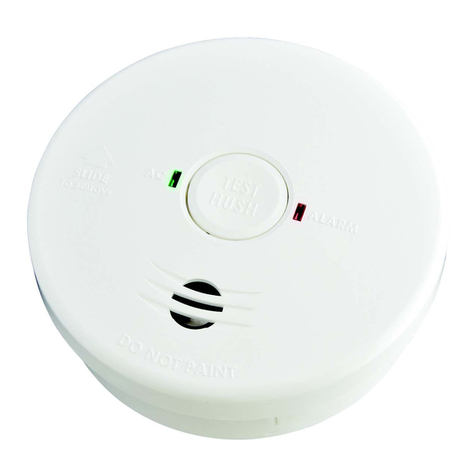
PSA
PSA LIF5800/2 User manual

PSA
PSA Lifesaver LIF5000 User manual
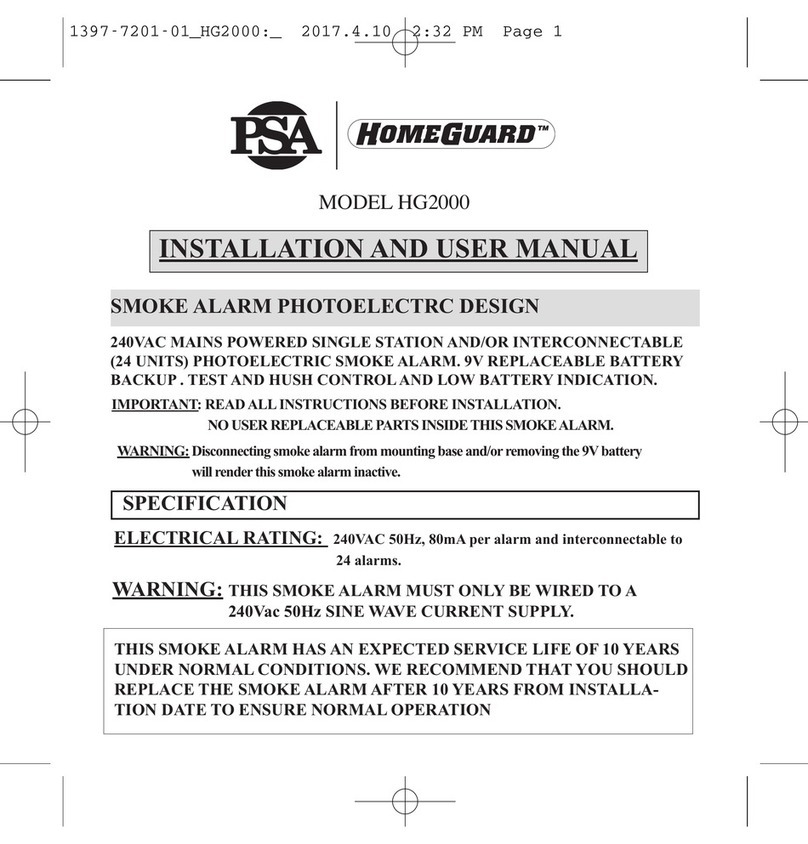
PSA
PSA Homeguard HG2000 User manual

PSA
PSA LIFESAVER LIFHA240 User manual
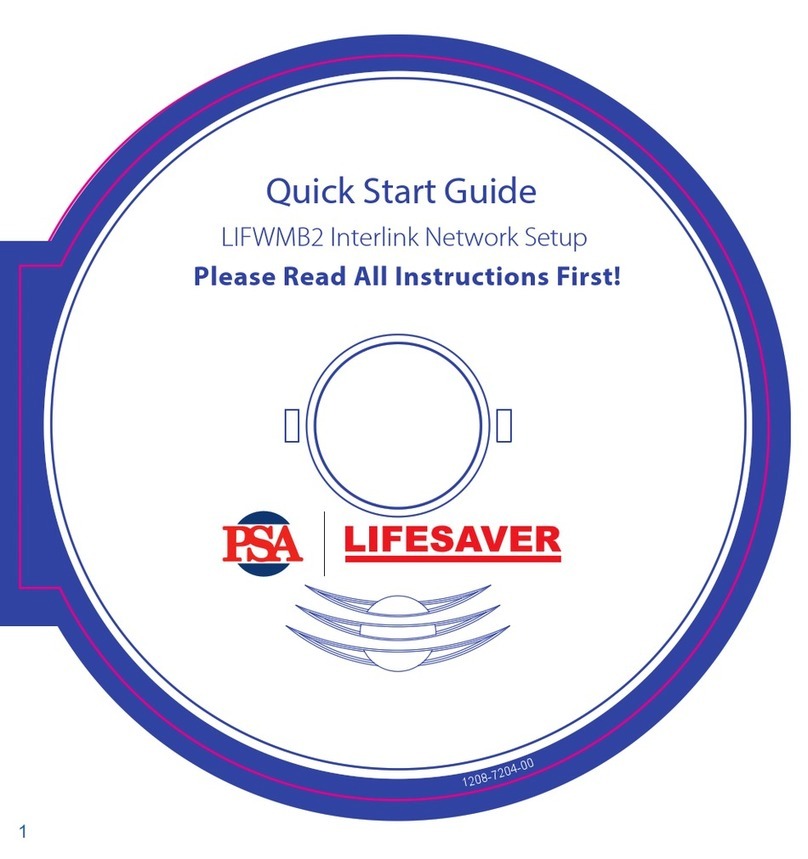
PSA
PSA LIFESAVER LIFWMB2 User manual

PSA
PSA Lifesaver HA240 User manual
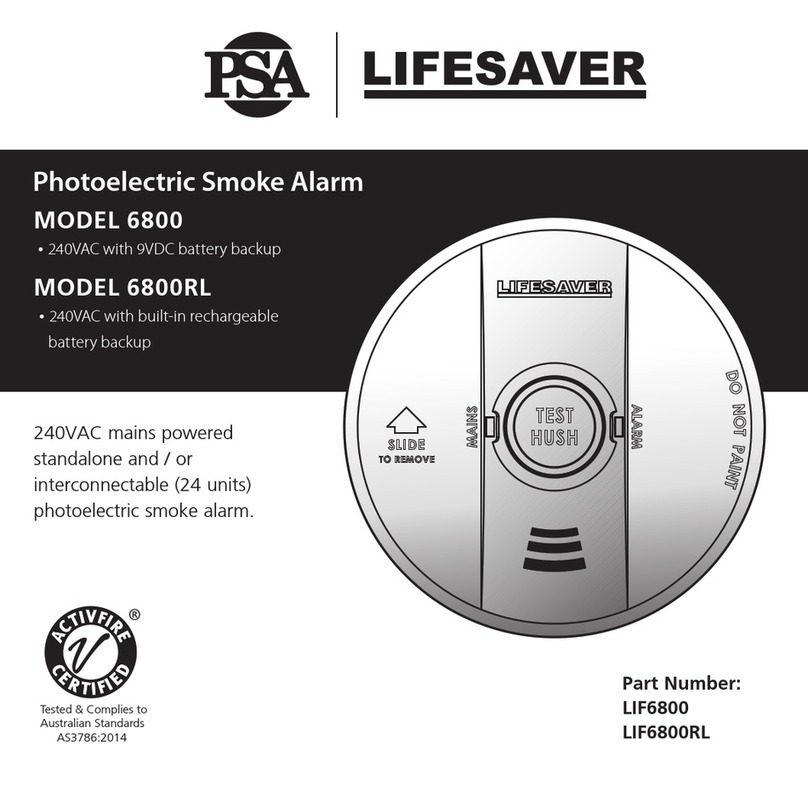
PSA
PSA Lifesaver 6800RL User manual
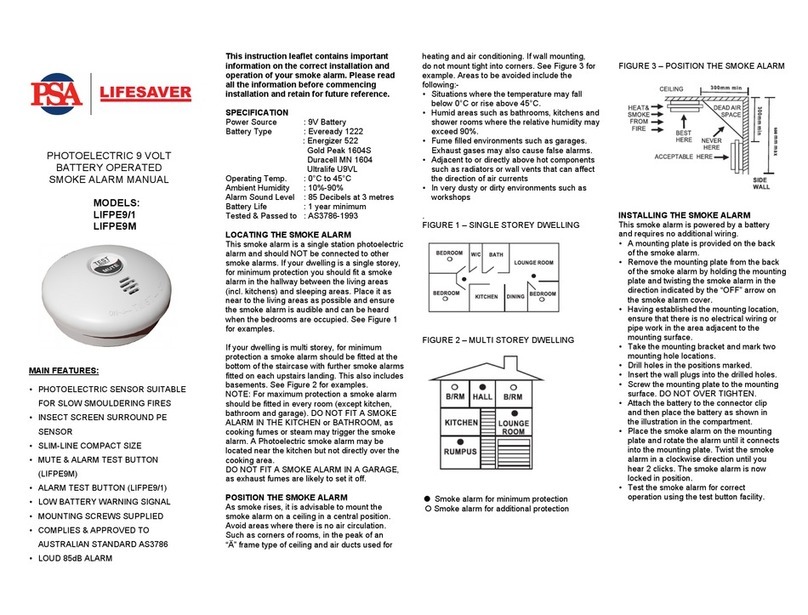
PSA
PSA LIFESAVER LIFPE9/1 User manual
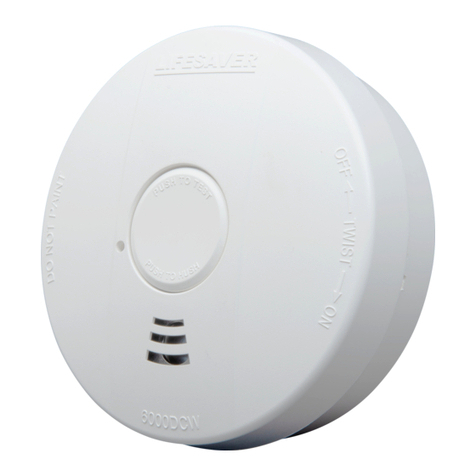
PSA
PSA LIFESAVER 6000DCW User manual

PSA
PSA LIFESAVER LIF10YPEW User manual

